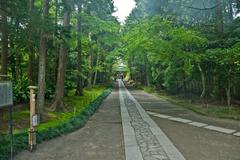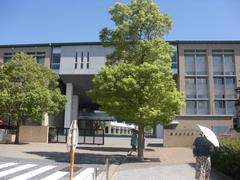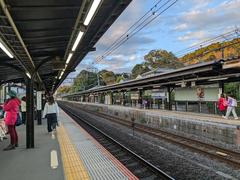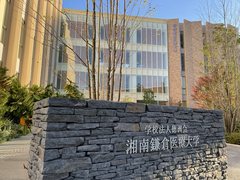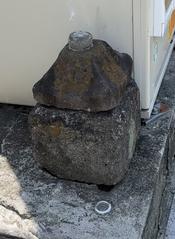
Kōmyō-Ji Kamakura Visiting Hours, Tickets, and Tourist Guide
Date: 04/07/2025
Introduction to Kōmyō-Ji Temple in Kamakura
Nestled in the scenic coastal district of Zaimokuza, Kamakura, Kōmyō-Ji (光明寺) is a significant embodiment of Japan’s religious and cultural heritage. Founded in 1243 CE by the Buddhist priest Nenna Ryōchū, under the patronage of Hojo Tsunetoki, Kōmyō-Ji is a prominent temple of the Jōdo (Pure Land) sect. Visitors are greeted by the imposing Sanmon gate, one of eastern Japan’s largest wooden gates, with breathtaking views of Sagami Bay and Mt. Fuji. The temple is equally celebrated for its tranquil gardens, lotus ponds, and seasonal spectacles such as hydrangea blooms and autumn foliage.
Kōmyō-Ji is more than a historical monument—it’s a living cultural center. Regular nenbutsu chanting, shojin ryori (traditional Buddhist vegetarian cuisine), and sutra copying offer immersive experiences for visitors. With free admission, accessible grounds, and its proximity to Kamakura Station and Yuigahama Beach, Kōmyō-Ji welcomes all who seek tranquility, history, and cultural enrichment (Kamakura City Official, Kamakura Info, Trip.com Kamakura Guide).
Table of Contents
- Historical Background and Significance
- Visiting Kōmyō-Ji: Practical Information
- Notable Features and Visitor Highlights
- Architectural Features and Temple Grounds
- Visitor Experience and Seasonal Highlights
- Frequently Asked Questions (FAQ)
- Travel Tips and Nearby Attractions
- Conclusion
- References
Historical Background and Significance
Origins and Foundation
Kōmyō-Ji was established in 1243 by Nenna Ryōchū, under the Hojo clan’s patronage during the Kamakura period (Kamakura City Official). It became a vital center for Jōdo Buddhism, reflecting the religious and political ambitions of the era. Its strategic location in Kamakura, then the seat of the shogunate, helped the Pure Land sect flourish among both samurai and commoners.
Architectural Evolution and Cultural Heritage
Over centuries, Kōmyō-Ji has witnessed fires, reconstructions, and patronage from the Ashikaga and Tokugawa shogunates. The current Sanmon gate, rebuilt in 1847, and the main hall (Hondō), reconstructed in 1698, are testaments to the temple’s resilience (Kamakura Info). The temple’s artistic treasures, such as the Amida Nyorai statue and ancient sutra collections, are designated Important Cultural Properties (Jodo Shu Official).
Religious and Samurai Connections
Kōmyō-Ji’s influence is intertwined with the Kamakura shogunate and samurai culture. The temple’s cemetery includes graves of notable samurai, and its role as a gathering place for nenbutsu chanting and rituals underscores its spiritual significance (Kamakura Info).
Visiting Kōmyō-Ji: Practical Information
-
Visiting Hours:
- 8:00 AM – 5:00 PM (last entry 4:30 PM); some sources indicate 8:30 AM – 4:30 PM or seasonal variations.
- Check the official website for updates.
-
Admission:
- Free for general entry.
- Some exhibitions or areas may require a fee (typically 300 yen for adults during special events).
-
Accessibility:
- Wheelchair accessible on main paths and gardens.
- Restrooms equipped for accessibility.
-
Getting There:
- 15–30 minute walk from Kamakura Station, or bus #40 to Komyoji stop.
- Short walk from Yuigahama Beach.
-
Visitor Services:
- English brochures, temple stamps (goshuin), clean restrooms, and guided tours (check schedule).
Notable Features and Visitor Highlights
-
Sanmon Gate:
- A grand wooden gate, measuring about 16 meters high, offers panoramic views from its upper balcony during special openings (Kamakura Guide).
-
Main Hall (Hondō):
- Houses the revered Amida Nyorai statue. The hall is the largest in Kamakura and features Edo-period craftsmanship.
-
Gardens:
- The Kishu Garden with lotus pond and a traditional karesansui rock garden provide seasonal beauty and tranquility.
-
Cemetery:
- Resting place of prominent samurai and historical figures.
-
Cultural Events:
- Nenbutsu chanting, Bon Odori festival, Oeshiki ceremony, concerts, and tea ceremonies.
Architectural Features and Temple Grounds
Layout and Spatial Organization
Kōmyō-Ji’s expansive site is arranged along a central axis, starting at the Sanmon gate, leading to the Main Hall, gardens, and a hillside viewpoint. The grounds are more spacious than many other Kamakura temples, creating an open and harmonious atmosphere (Kamakura Guide).
Sanmon (Main Gate)
The Sanmon, reconstructed in the 19th century, is a two-story wooden structure with intricate bracket complexes (tokyō) and painted beams. It is both a symbolic threshold and an architectural highlight (Autodidact Adventures).
Main Hall (Hondō)
An Important Cultural Property, the Hondō features a raised stone platform, wide verandas, lacquered columns, and the principal Amida Nyorai image (Kamakura Guide).
Subsidiary Structures
- Belfry (Shōrō):
- Showcases Edo-period woodwork with exposed brackets and a curved roof.
- Lecture Hall and Monastic Quarters:
- Tatami interiors, sliding doors, and wooden verandas emphasize the temple’s monastic character.
Gardens and Viewpoints
- Kishu Garden and Lotus Pond:
- North of the Hondō; lotus blooms in summer, stone lanterns, and seasonal flowers.
- Rock Garden:
- Minimalist design for meditation.
- Hillside Viewpoint:
- Recognized among Kanagawa’s scenic sites; offers views of the coastline and Mt. Fuji.
Seasonal Highlights
- Spring: Cherry blossoms
- Summer: Lotus pond and coastal breezes
- Autumn: Maple and ginkgo foliage
- Winter: Crisp air and clear views
Visitor Experience and Seasonal Highlights
Unique Experiences
-
Shojin Ryori (Monastic Cuisine):
- Reserve in advance for a temple meal (¥4,500–¥6,500). Available lunchtime; closed in February.
-
Sutra Copying (Shakyo):
- Hands-on Buddhist calligraphy sessions, open to all ages (reservation required).
-
Observation Deck:
- The Sanmon’s upper balcony gives sweeping views of the ocean and Mt. Fuji.
-
Cultural Events:
- Seasonal festivals, concerts, and special rituals—check the event calendar.
Accessibility and Services
- Modern, accessible restrooms and parking
- English-language support
- Wheelchair-friendly paths
- Temple office for inquiries and souvenirs
Frequently Asked Questions (FAQ)
Q: What are the visiting hours?
A: Typically 8:00 AM–5:00 PM (last entry 4:30 PM); hours may vary by season or event.
Q: Is admission free?
A: Yes, general admission is free. Special exhibitions may require a fee.
Q: Can I book guided tours?
A: Yes, on weekends and holidays. Check ahead for schedules.
Q: Is the temple wheelchair accessible?
A: Most areas are accessible, but the hillside viewpoint requires a moderate climb.
Q: How do I get to Kōmyō-Ji?
A: 15–30 minute walk from Kamakura Station or take bus #40 to Komyoji.
Q: Are shojin ryori meals and shakyo experiences available?
A: Yes, but advance reservations are necessary.
Travel Tips and Nearby Attractions
- Best Times to Visit:
- Spring (cherry blossoms) and autumn (fall foliage) offer stunning scenery.
- Nearby Attractions:
- Yuigahama and Zaimokuza Beach
- Wakae-jima (ancient harbor)
- Hase-dera, Kōtoku-in (Great Buddha), and other Kamakura temples
- What to Bring:
- Comfortable shoes, camera, and weather-appropriate clothing
- Etiquette:
- Be respectful, especially during ceremonies; check photography rules.
Conclusion
Kōmyō-Ji Temple is a living testament to Kamakura’s religious and architectural legacy. From its grand Sanmon gate and revered Amida Nyorai statue to tranquil gardens and vibrant community events, the temple offers a unique journey into Japanese history and spirituality. With free admission, accessible facilities, and immersive cultural experiences, Kōmyō-Ji is a must-visit for travelers seeking both peace and heritage on Japan’s eastern coast.
For planning and real-time updates, consult the official tourism guide and consider using tools like the Audiala app for audio guides and event notifications. Let Kōmyō-Ji be your gateway to discovering the best of Kamakura’s historical sites and spiritual charm.
References
- Kamakura City Official
- Kamakura Info
- Jodo Shu Official
- Trip.com Kamakura Guide
- Kamakura Guide
- Autodidact Adventures


















